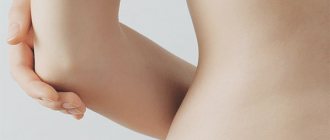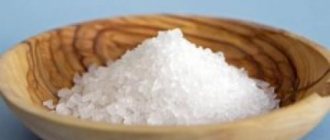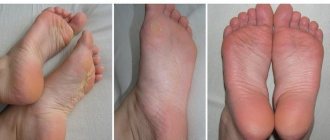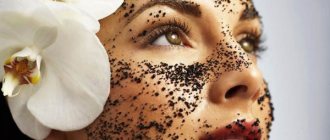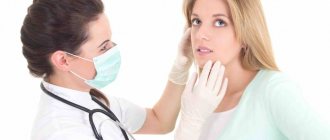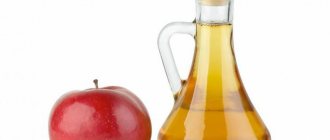For some reason, we take care of the skin on our face, neck and hands all year round, but we forget about our heels. And only with the arrival of spring, or rather summer, when it’s time to put on sandals, do we begin to notice problems with the skin on the heels. And then we begin to rush around and think about what to do to get it in order as quickly as possible. But everything doesn’t happen quickly; you need to do a lot of different procedures and patience to achieve an amazing result. And it’s best to know in advance that you need to take care of your heels all year round, just like your face and hands.
Causes of Rough Skin and Cracked Heels – Why Are Heels Hard?
If you decide to get rid of rough skin on your heels, then you should prepare yourself for a long process of dealing with this problem. Procedures should be carried out weekly, and if possible, then 2 times every 7 days. They consist of the following points.
Steaming
This is a must for removing rough skin. This item includes all kinds of foot baths. Below we provide recipes for their preparation. Note that the water in them should be approximately 37-40 degrees Celsius, and the procedure should take 20 minutes.
For this purpose, you should use pumice or a brush with natural bristles. Please note that you cannot use a special metal brush, much less cut off the skin with a blade, otherwise you may get hurt, and then a sore will appear on your heel, which will take a long time to heal and will cause you discomfort while walking. This procedure should be carried out immediately after the bath. First you need to wipe your feet dry, and then treat your heels with a pumice stone or brush.
Hydration
After you have removed the top layers of rough skin, you should apply moisturizer to your heels. This will be the final stage of softening the epidermis.
In between removing rough skin, it is recommended to perform these procedures. They will help make the skin soft and tender. You can perform them 2 times a week when you do not plan to remove the hardened epidermis. You will find recipes for these procedures below.
How to get rid of rough skin on your heels: regularly use foot baths, use softening or exfoliating masks, and be sure to treat your feet with a special brush or pumice stone
. If you are thinking about how to get rid of rough skin on your heels using traditional methods, then below you will find recipes on how to It can be done.
Heel baths
There are many reasons why rough skin appears on the heels. Among them are the following factors:
- Metabolism is disrupted.
- Diabetes.
- Thyroid diseases.
- Hormonal disease.
- Avitaminosis.
- Lack of vitamins E and A.
- Fungus.
- Biochemical skin disorders.
- Tight, narrow shoes.
Calluses on the feet are usually caused by uncomfortable shoes. Poor quality material, inflexible soles, incorrect insoles - all this leads to the formation of hard calluses on the toes. Quite often, calluses form while wearing new shoes. It all starts with rubbing with uncomfortable shoes. A painful bubble with liquid appears at this place.
Corns are also a type of callus on the fingers and heels. Occurs due to wearing tight shoes. Corns cause uneven pressure on the foot while walking. For example, if a woman prefers to wear high-heeled shoes, then corns form at the base of the toes. In this case, daily procedures to remove this problem will not lead to a positive result.
You just need to change your shoes to eliminate the disease. It is recommended to treat the newly formed callus with hydrogen peroxide or furatsilin solution, applying a special callus plaster on top. A burst callus is a small wound that is hidden under a bubble of skin. It must be protected from pathogenic bacteria and dirt.
No matter how much we dream of smooth heels, unfortunately, after a certain age, our heels suddenly lose their childish tenderness and softness.
Moreover, sometimes heels remain rough even with intensive and regular care.
- Lack of proper care.
- Drying of the skin. A reason that is not unique to the summer period: sometimes this also happens in winter when the air in the apartment is dry.
- Wrong shoes. As you know, tight and poor-quality shoes contribute to disruption of the water-fat balance of the skin and its injury. In addition, unnatural and harmful materials for the skin can cause irritation, allergies, increased sweating and, as a result, dry skin.
- Poor nutrition. A lack of vitamins always affects the skin with cracks, dryness, irritation and other manifestations. Rough heels are often found in girls who are constantly on diets. Basics of proper nutrition for beauty and health
- Excessively intensive heel care. Yes, this happens! For example, in the case of too frequent and intense peeling, which requires time for skin restoration (more than once a week, this procedure is not recommended).
- The tap water is too hard.
- Frequent hypothermia - or, on the contrary, overheating of the legs.
- Use of low-quality cosmetics (including soaps and gels).
The main recommendations include simple and understandable rules of care and lifestyle:
- We wear the right shoes.
- We often walk barefoot on grass and pebbles and do foot massages.
- We use gentle abrasives.
- We regularly use a rich nourishing cream (preferably at night).
- We follow a diet and take care of personal hygiene.
- We wear slippers in swimming pools, bathhouses and other public places.
- We avoid synthetic materials when choosing shoes.
- We use washable rugs in the bathroom.
- 2-3 times a week (ideally, every day) we take foot baths (warm! Not with hot water!) and use a scrub.
- After a bath and a regular bath, be sure to pour cool water over your feet. Especially before bed.
- Always dry your feet and toes after a bath.
- We do not use rough pumice stones, grinding stones or blades.
- After each procedure, treat the file used with a disinfectant solution (or at least wash it with soap and pour boiling water over it).
In the summer, we intensify the intensity of heel care.
Heel spur - causes and treatment
Heels are rough and cracking - what to do at home
If you notice that your feet have begun to become rough, and small cracks have already formed on the skin, then this means only one thing - you need to do something urgently.
But don’t rush to start the procedures right away. First of all, you should make sure that dry skin on your feet is not in any way related to other diseases. Otherwise, you will waste time on treatment that will lead nowhere.
If the cause of this manifestation is a simple lack of vitamins or uncomfortable shoes, then medical procedures will quickly help the skin of the feet to recover.
But the recovery process is not limited to one point, since the treatment of dry skin must be carried out comprehensively.
Let's find out what to do if you have dry and rough heels:
1. Pay attention to your diet. Increased dryness of the skin may be due to the insufficient amount of nutrients entering the body. Include more vegetables and fruits in your usual diet.
2. Do gymnastics. Poor blood circulation to the extremities may well be the cause of dry skin on the heels. Spend at least a few minutes a day doing simple leg exercises.
3. Wear only comfortable shoes. Do your feet hurt after wearing high heels? Start wearing shoes that will make your feet less tired. Swap your shoes for comfortable sneakers made from breathable fabric, or choose ballet flats that won't put as much pressure on your feet.
4. Humidify the air in the room. During the heating period, the air in the room becomes too dry, and this may be the reason for the unhealthy appearance of your feet.
5. Wear the “right” socks. Give preference to socks made from natural materials that will allow your feet to “breathe.”
6. Cleanse with pumice sparingly, otherwise you may damage your skin.
7. Masks should be made only after preliminary steaming using a bath. You can devote time to such procedures a couple of times a week.
8. Use natural ingredients. Carrying out any procedures to improve the skin of the feet requires the use of only natural ingredients. If cracks have already formed on your heels, then products with a rich chemical composition will only harm you.
With the onset of warmth, you will still have to show off your legs, which have lost their former appearance over the winter.
But returning it is not so difficult, especially if we are familiar with such recommendations. But before you do anything, you need to find out the cause of such a problem as dry skin on the heels. https://youtu.be/https://www.youtube.com/watch?v=lA0fMnIN5SU
Treatment of heels with medications
- Fungus. The most common cause of dry and rough skin with cracks. Unfortunately, the fungus manifests itself not only with these symptoms, and in the absence of proper treatment, the legs take on a very unsightly appearance, which is also accompanied by itching, sweating and other troubles.
- Diabetes mellitus type 2. In this case, it is very difficult to deal with skin problems, and you cannot do without consulting a specialist.
- Problems in the endocrine system. Issues of aesthetics (heels, in this case) are resolved after (or simultaneously) with treatment.
- Obesity. With this disease, the full blood supply to the lower extremities and their connection with the central nervous system is disrupted, the skin on the feet becomes thinner, and there is a tendency for the skin to crack.
- Psoriasis. With this disease, the entire immune system does not work well, and creams and hygiene alone will not get rid of rough skin on the heels - an integrated approach is needed.
It is important to understand that serious problems with the skin of the feet can be a very warning sign. Therefore, in the case when you cannot cope with cracks on your own, and the accompanying symptoms cause you inconvenience, it makes sense to consult a dermatologist and therapist.
Types of pedicure - which one to prefer?
You can get rid of rough skin on your feet, as well as calluses. There are a huge number of effective remedies - cosmetic, medical and folk that will help make your feet soft and smooth. You can cure calluses on your toes with the help of special creams and ointments, available in any pharmacy. In addition, there is an excellent remedy - special plasters for dry calluses.
The main active components of such products are benzoic and salicylic acid, which soften hard formations on the heel well. First, you need to steam your heels in a bath and only then apply a cream or special product to the damaged area. To prevent the drug from coming into contact with healthy skin, it is necessary to cut a hole the size of a callus in a small piece of the patch.
Secure the bandage by applying cream or product over it. Stick the whole patch on top. The ointment must be kept for about 8 hours. After which, rinse with warm water and treat the callus with pumice. You can also use a variety of virgin vegetable oils. After soaking cotton socks in oil, put them on overnight. And in the morning, rinse with lukewarm water and rub hard calluses on the soles with a pumice stone.
Baths for rough skin on heels
At some stage, you can only get by with baths and, say, ordinary pumice. After all, steaming precedes the process of removing the dead layer of dermis.
The procedure is pleasant and simple. Various agents are added to water at a comfortable temperature, poured into a convenient container. The feet are immersed in water and steamed for 10-15 minutes.
To soften the skin on the heels, they often use, for example, bath salts (from a cosmetics store) or a mixture of salt and soda (the skin is steamed in a warm solution), or medicinal herbs.
By the way! Baths can be done first daily, and then according to the degree of coarsening of the skin.
Heel cleansing
Taking care of your heels in a beauty salon is a pleasant experience. But not everyone has the means, time, or desire to go to salons.
And it’s much easier to take care of your heels at home. Especially if you know exactly how.
First, steam the legs in the bath.
It is recommended not to neglect this stage of care, because it is the baths that help quickly soften the skin for easy removal of dead cells, nourish and moisturize the heels.
And if you also give a foot massage before the bath, the result will be even more surprising, pleasant and long-lasting.
The massage can be replaced with regular walking on a hard massage mat or with your feet moving peas, balls, etc.
Some home recipes suggest off-label use of medications. For example, regular aspirin, which perfectly softens the skin, will help remove corns.
The effectiveness of aspirin in the fight for softness and smoothness of heels is due to acetylsalicylic acid in its composition. This substance is very often used for peeling.
Aspirin will help cope with the following symptoms:
- dry skin;
- cracked heels;
- corns;
- painful sensations.
To quickly get your feet in order, you only need 10 aspirin tablets. The drug should first be crushed to a powder state and then mixed with 250 ml of ethyl alcohol. You still need to add 1 bottle of iodine to the resulting solution. This mixture can be stored in a dark place for a week.
The resulting liquid is used to make foot lotions. To do this, a gauze napkin is soaked in the mixture and tied to the heels. It is better to keep the lotion all night. In the morning, the remnants of the product are easily washed off with water, and the feet are treated with pumice. After the procedure, the skin must be lubricated with a nourishing cream.
In addition to baths, constant use of a pedicure brush and file is necessary.
Steamed heels should be lightly rubbed with a pumice stone, removing any residue with a brush. To achieve a greater effect, apply a scrub to the pumice stone, which will help polish your foot well. Regular cleansing procedures will lead to ideal heels.
Contraindications for heel cleaning
There are no clear contraindications for heel cleaning. There are restrictions regarding some folk remedies using drugs purchased at a pharmacy or unusual ingredients.
The main caution is individual intolerance to any substance. For example, baths with hydrogen peroxide cannot be used for heart disease, phlebitis, or the presence of transplanted organs.
During pregnancy, gentle cleaning methods are recommended; it is better for pregnant women to go to a salon where they will undergo a hardware cleansing.
A child should not clean his heels with rough substances; this will damage his delicate skin and activate the rapid hardening of the epidermis.
Foot masks at home
After steaming and subsequent removal of the rough part, you should apply a softening mask. The easiest option is to use regular cream. However, masks that can be made from natural products will bring greater effect: fruits, vegetables, vegetable oils, eggs. They will not only have a beneficial effect on the feet, but will also supply the body with necessary vitamins. There are a variety of such masks:
- Mayonnaise nourishes, moisturizes and softens the skin of the feet.
- Lemon juice will make it even and smooth.
- Cracks on a rough heel can be cured in half an hour with a paste of ordinary white cabbage leaves.
- You can cure calluses and get rid of corns with the help of warm mashed potatoes, which are applied to the feet for an hour, wrapped in film.
- Tomato paste or a piece of tomato will get rid of calluses
- Egg yolk with lemon juice and starch will help cope with rough heels
- Finely grated potatoes with a spoonful of natural fat and egg yolk, applied to the heels for 20 minutes will soften them.
- A peeled onion baked in the oven until softened with honey, sea buckthorn oil, rosehip oil and foot cream will soften rough feet.
The effect can be seen after regular use of masks. The course, as a result of which the skin on the legs is renewed, lasts from two to three months.
You should start removing the rough layer of skin and calluses on the heels with foot baths. Such a simple and affordable procedure will help soften the stratum corneum of the epidermis, and you can easily remove corns after a pumice bath.
The best foot baths are:
- with a decoction of medicinal herbs;
- with soap shavings;
- with baking soda;
- with sea salt;
- with oils;
- with glycerin.
All these products cost pennies, and their effectiveness can be compared to salon procedures.
To make a foot bath, you need to fill a basin with hot water. Please note that:
- soap helps to quickly clean contaminated areas on the feet;
- sea salt is an excellent antiseptic. Take baths with sea salt if there are cracks in the heels;
- baking soda helps fight fungus;
- glycerin is an effective emollient;
- herbs and oils are universal helpers in foot care. Decoctions and oils of chamomile, calendula and celandine are especially useful.
Baths must be taken for at least 15 minutes. After the procedure, the heels are cleaned with a brush and pumice stone to remove the stratum corneum, which will soften well in water. After cleaning the heels with pumice, the feet are rinsed and dried, and finally, a nourishing cream is applied to soften the steamed skin.
To completely remove rough skin on the heels, baths should be taken at least twice a week for a month.
In addition to baths, special masks and compresses according to traditional cosmetology recipes help to remove the rough layer of skin on the heels. It is advisable to apply such compositions immediately after a steam bath, while the skin of the feet is soft.
Masks and compresses are applied for 15-20 minutes, after which the feet are rinsed and a nourishing cream is applied.
To prepare this mask, grind the raw yolk with 1 tbsp. l. lemon juice. It is useful to add 1 tbsp to the mask. l. vegetable oil (it is better to use olive oil). It’s great if you add a few drops of tea tree oil to the mask.
The mixed mask is applied in a thick layer to the feet and wrapped in film. After 15 minutes, you can rinse off the composition with warm water, dry your feet and apply a nourishing cream.
Glycerol.
If your heels are very rough, then pharmaceutical glycerin will help cope with this problem. Keep this mask on all night, wrapping your feet with film and wearing warm socks.
To prepare the mask, you need to buy glycerin in a bottle at the pharmacy. Usually the bottle is not completely filled. Add vinegar essence or regular apple cider vinegar to the bottle and shake it well. This mixture is applied to the feet after taking a foot bath.
Lemon.
Lemon is an excellent remedy that quickly helps remove the stratum corneum on the heels. The fruits are cut into circles and applied to the feet. Then the feet are wrapped in film and socks are put on. It is best to do this at night. In the morning, you can easily remove all the rough layers of skin with a pumice stone.
Onion.
Onions are an indispensable aid in foot care, despite their pungent aroma. You should pass the onion through a meat grinder and apply the pulp to your feet. The feet are tightly wrapped with film. Socks are put on top of the film. The mask can be applied at night. By morning, the skin will swell, and you can easily clean it with a pumice stone. Your heels will become unusually smooth and soft.
Viburnum honey.
Ripe viburnum berries need to be crushed and mixed with honey. In this case, you need to take exactly 2 times less viburnum than honey. This mixture is used for compresses. The heels are lubricated with the composition, then covered with film and socks are put on. Honey perfectly softens corns, and viburnum juice promotes faster renewal of the epidermis.
Rye bread.
Rye crackers need to be soaked in warm fresh milk. The resulting pulp is used for compresses. The mixture is simply applied to the corns and left for 30 minutes. This method helps to quickly restore velvety skin.
How to soften very rough and rough heels
Most of all masks and compresses are applied to already softened skin, because the effectiveness of the procedures depends on this. Therefore, we need to properly prepare our feet for the next stage.
The best type of procedure for softening the skin of the feet is considered to be a foot bath. This doesn't mean you just need to steam your feet in hot water. The solution should contain ingredients that will help remove dead skin from your feet.
Each of the bath solutions will contain its own natural medicinal component:
Bath with herbal infusion
The composition of the product will be dominated by plants such as chamomile, sage, string and calendula.
The bath is prepared using a pure decoction, in which you need to place your feet for just a few minutes so that the skin becomes soft.
In addition, the decoction has an antibacterial effect, which will be useful in the case of fungus.
With red wine
Preparation of the solution consists of mixing half a liter of wine with two liters of water. Dip your feet into the prepared solution for about 20 minutes. After just a few treatments you will see a noticeable improvement in your skin condition.
Please note that such procedures are considered an additional type of treatment and should be carried out in combination with other types of therapy.
Saline solution
To prepare it, it is advisable to use sea salt, but you can also use table salt. You need to dissolve a few tablespoons of salt in warm water, after which you will have a full 15 minutes to enjoy the pleasant sensations.
If your skin requires urgent hydration, then water can be replaced with milk. As soon as the skin becomes soft, you need to immediately treat it with pumice;
The best compress recipes
The cause of calluses and roughness is wearing uncomfortable shoes. Women who prefer dress shoes very often face a similar problem. Experts know how to get rid of rough skin on your heels. Therapeutic compresses, masks and lotions help remove the dead layer of cells. The most effective ones are discussed in the table.
| Means | Preparation | Mode of application | Effect of use |
| Glycerol | The substance is mixed with table vinegar. The resulting solution is thoroughly shaken. | The mixture is applied to the skin of the heels daily. The top of the feet is covered with plastic film, which ensures heat retention. | Vinegar is an excellent remedy for removing hard corns, and glycerin helps treat cracks. |
| Lemon | Fresh citrus fruit is washed and cut into thin slices. | Lemon pieces are applied to the heels and secured with a bandage. After 6-8 hours, the feet are washed and a caring cream is applied. | The keratinized skin on the heels softens under the influence of lemon juice. |
| Onion | The vegetable is crushed to a pulp. | The product is applied liberally to the feet and covered with gauze. The compress is left overnight. | Onion juice helps soften the skin. After such a compress, dead cells can be easily removed with a pumice stone or file. |
| Castor oil | The finished product is purchased at the pharmacy. The oil can be heated before use. | Oil is applied to the soles. The best effect can be achieved by wrapping your feet in cling film and putting socks on top. | The oil softens the skin well and helps heal cracks. |
| Plantain and burdock | Fresh plant leaves are crushed and mixed with olive oil. | The mixture is applied to the heels. This recipe is relevant for cracks and damaged skin. | Olive oil saturates the epidermis with vitamins, and plant extracts promote tissue regeneration. |
There are many ways to keep your feet beautiful and healthy, even if wearing uncomfortable shoes causes the skin on your heels to become rough. It is important to know how to clean your feet from dirt and accumulation of keratinized particles of the epidermis. Herbal baths, natural scrubs, compresses and masks have positive reviews. After all the manipulations, a nourishing cream is applied to the skin. This will prevent the skin from becoming rough and will maintain softness and smoothness.
- Dairy. Grate classic baby soap on a coarse grater, add 1 tbsp of shavings and 0.5 liters of warm milk to the basin, then hot water. Keep the legs until the water cools down.
- Herbal. Take 1 tablespoon of dry herbs: oak bark and chamomile, celandine and calendula, St. John's wort. Pour 1 liter of boiling water, leave for a day, and in the evening pour the strained broth into a bowl and dilute with boiling water.
- Soda with soap. For 1 basin - ½ cup of soap shavings and the same amount of soda, plus boiling water. Keep the legs for about 10 minutes.
- Citrus. 2-3 hours before the procedure, brew citrus peels in boiling water, and then simply add the broth to the water, plus 1-2 drops of orange essential oil.
- Nettle. In a bowl of hot water - 1 liter of nettle infusion (from 2 tbsp of dry nettle).
- Oily. Aroma bath for feet and soul. For 1 bowl – 2-3 drops of your favorite essential oil.
If you have time for daily heel care procedures, then instead of files and pumice stones, it is better to use scrubs to exfoliate rough skin. They act more gently (a thick layer of rough skin cannot be removed), but with regular use of scrubs, the dream of “baby heels” becomes a reality.
You can make scrubs at home with your own hands if you want to save on store-bought products - which, by the way, often contain harmful ingredients.
Important! We apply the scrub only to already steamed feet, and after the massage with the scrub, we leave the mixture on the heels for 7-10 minutes - that is, we are not in a hurry to wash it off.
- Sugar with butter. Mix olive oil and sugar 1:2, apply to feet, massage.
- Coffee with sea salt. Mix 1:1 tablespoon coarse sea salt and coarsely ground coffee, add 2 tbsp kefir, apply and massage.
- Cocoa with sugar. For 2 tsp sugar - 1 tbsp cocoa (not nesquik, but normal confectionery cocoa powder) and milk for binding. Mix, apply, massage.
- Citruses with salt. For 1 tbsp of fine salt - the peel of 1 orange, ground in a blender.
- Salt with honey. For 2 tbsp honey – 1 tbsp sea salt.
- Sand with sour cream. If you live by the sea, then this option is for you. If there is no sea sand, we take regular sand. For 1 handful of sand - 2 tbsp of fat sour cream. Mix, apply, massage.
Folk remedies
How to remove rough skin on the heels using folk remedies:
- Soda baths . One tablespoon of baking soda is diluted in a liter of water. Feet should be kept in the bath for 15 minutes. The skin on the heels softens, and ordinary pumice should easily cope with the problem. Foot brushes or nail files will also work. Scrubs should be used along with products for mechanical cleaning of heels. The heels are thoroughly treated for about three minutes and rinsed with water. Then you need to lubricate your feet with nourishing cream.
- You can steam your feet in a bath of decoctions of medicinal herbs . For these purposes, chamomile, sage, calendula, St. John's wort, and elecampane are brewed. Take a tablespoon of herb per liter of water, boil for 5 minutes, leave for 10 minutes. Decoction baths take 15 minutes, then use pumice, scrub, rinse with water, and treat with cream.
- For cracked heels, the skin of the feet is lubricated with almond, sea buckthorn, peach, olive oil, St. John's wort oil, and calendula . The product is rubbed into the skin with gentle movements until the oil is absorbed.
- Almond oil has many beneficial properties. This is an excellent product for caring for the skin of the face and body. It can nourish the skin, moisturize, soften, smooth, increase elasticity, and strengthen eyelashes. Contains vitamin E, which slows down the aging process of cells and eliminates skin inflammation. Vitamin F can normalize the function of the sebaceous glands, prevent pore enlargement, and improve the structure and appearance of hair. The oil contains vitamins A, B1, B2, B3, B6, zinc, iron, calcium, magnesium, phosphorus. The oil soothes and regenerates.
- Before use, any oil should be heated and rubbed in warm.
- Sea salt and a couple drops of essential oil are added to warm water . The bath should be taken for 15 minutes until the water cools down.
- Citric acid also gets rid of rough skin. Lemon eliminates dead cells, nourishes, protects against infection. You can take lemon slices and tie them to your heels all night. In the morning, the bandage is removed and baby cream or oil is applied. Repeat the procedure daily until the skin on the heels becomes smooth and soft.
- Apple cider vinegar removes dead, rough cells, accelerates healing, and normalizes pH levels. A cotton swab soaked in apple cider vinegar is applied to the heels before going to bed. In the morning, the skin is cleansed and oil is applied.
- Onions have anti-inflammatory and antimicrobial properties . Relieves calluses and corns. Pieces of onions are cut into thin slices, sprinkled with lemon juice, sprinkled with salt, and tied to the heels overnight.
- Brew 2 chamomile tea bags in two to three liters of water . This product can disinfect, cleanse, soften the skin, and eliminate inflammation. The procedure is done every night. You can make the following remedy: a teaspoon of lemon juice is mixed with a chopped clove of garlic and a teaspoon of chamomile. Apply to rough skin for one hour.
- You can also mix baking soda with soap . Grind the soap, add a teaspoon of soda. The mixture is applied to clean skin and wrapped in polyethylene. You need to keep your feet in the bag for 20 minutes. Dead skin is removed with a file, rinsed with water, and the feet are dried. Olive oil is applied.
- A tablespoon of glycerin and three tablespoons of vinegar are dissolved in a liter of water . The feet are immersed in the mixture, after 15 minutes the heels can be cleaned.
- A couple of tablespoons of starch are poured with cold water . You can also dissolve white clay in warm water and keep your feet in the bath for a while.
- Three tablespoons of salt are dissolved in a glass of warm milk and poured into a bowl of hot water. Feet should be kept in this solution for 30 minutes.
- Cabbage leaves, as well as burdock or plantain need to be mashed . They wrap the feet and put on socks all night.
- Starch is mixed with egg yolk and lemon juice . The product is applied to the heels, the feet are wrapped in wax paper, and socks are put on. In the morning, wash off the product from your feet and apply cream.
- The feet are wrapped in warm mashed potatoes with milk and left overnight . Raw grated potatoes mixed with egg yolk and butter are also suitable.
- A bottle of vitamin A is mixed with a tube of calendula ointment . The feet are treated with this product at night, then socks are put on.
Hydrogen peroxide
This product can be bought at every pharmacy and is available without a prescription. The main feature of the drug is wound disinfection .
Using hydrogen peroxide, hair is lightened, facial skin is cleansed, and heels are taken care of.
Peroxide will help even with the most advanced cases . It helps with bacterial skin diseases (fungus).
To prepare the rubdown, you need to dilute a tablespoon of hydrogen peroxide in six tablespoons of warm water. Soak a cotton pad in the solution and wipe the problem areas for three minutes.
For the bath, take two liters of hot water, 5 tablespoons of hydrogen peroxide. I take a bath for 10 minutes.
For a salt bath you need to take two liters of hot water, two tablespoons of hydrogen peroxide, a tablespoon of sea salt. Leave your feet in the solution for 7 minutes.
Aspirin
How to soften the skin of your heels with aspirin? Mixtures with aspirin, medical alcohol and iodine heal cracked heels and heal the skin in a very short time. First, wash your feet well, wipe them dry, smear them with the mixture, and put on cotton socks.
Aspirin heals wounds, alcohol disinfects, iodine dries. Alcohol can be replaced with vodka. At the same time, apply a bath with sea salt. The product will help if there is no fungus on the skin .
Glycerol
Glycerin perfectly softens and moisturizes heels . It also disinfects and eliminates the risk of suppuration of wounds on the feet.
However, this substance has a pronounced effect and should not be left on the skin of the heels all night.
You can make a bath or peeling with glycerin . Ammonia with glycerin will help with cracks and corns. The components are mixed in equal proportions. Rolled gauze is moistened in the mixture and cut into pieces.
Compresses are applied to the steamed and treated heels, the feet are wrapped in cling film, and socks are put on. After 3-4 hours, feet are washed with water and treated with nourishing cream.
What's next?
- If you don’t have a scrub (or are too lazy to make one), then use a file after the bath to remove rough skin. It is advisable to use only the fine-grained side: rough grinding of the heels contributes to the appearance of scratches, cracks - and even greater dryness. Smoothness and tenderness of the heels can only be achieved by regular procedures with a light and non-traumatic scrubbing effect.
- The use of pumice stones is strictly not recommended. Firstly, they injure the skin of the feet, and secondly, they are a source of bacterial growth.
- When using a file, first lubricate dry heels with cream and wait for absorption - this way the procedure will be more effective.
- We use a slightly damp file, but do not put three heels under water! We polish the heels until the rough skin is completely removed.
- Now we rinse the feet in warm water, wipe them dry, generously lubricate them with rich cream and put on cotton socks.
At least 2-3 similar procedures per week - and you will not be ashamed to wear open shoes outside.
Important:
- If there are cracks in the heels, they should be treated with a disinfectant immediately after the procedure, and only use a cream that contains components that promote the healing of cracks (for example, salicylic acid).
- It is not recommended to cut off rough skin and calluses! This procedure will only speed up the regeneration of injured skin, which will regain its “protective roughness” even faster. Use gentle means and methods – regularly and wisely, and the effect will pleasantly surprise you.
Scrubbing
The ideal method for treating heels at home. Stiff brushes and scrapers in combination with masks, compresses and socks will be the ideal way. There are various scrapers, brushes, files and machines (including shaving) on sale. Choose based on your skin condition and financial capabilities.
Remember! Cleaning the heels with a blade (and this may be preceded by various softening methods) must be done carefully, carefully, avoiding cuts!
How to restore softness to your heels - pharmacy products
- Steam your feet in the bath for 15 minutes, wipe, massage with cream, treat with a soft grater “dry”. Next, take a warm shower, wipe dry again and apply the pre-prepared mixture: 1 tbsp starch, 1 tbsp lemon juice, 1 raw yolk. Now we wrap the legs with film for a couple of hours, or better yet, overnight. All you have to do is remove the exfoliated skin with a light file, rinse the legs in the shower and, after drying, lubricate them with cream.
- We wrap the feet in slices of fresh zucchini and fix them with film for 2 hours. Next, rinse the legs, dry them, file them, and apply cream.
- Heat olive oil (about 100 ml) in a water bath, add a piece of beeswax, then 1 tsp each of sea buckthorn oil and glycerin. Apply the warm mixture to steamed and dried feet, leave overnight under cotton socks. Store the mixture in the refrigerator (you can spread it cold).
- Cook oatmeal that is not too thick without sugar and salt, cool and apply it lukewarm to your feet. We fix it with film, put socks on top, after an hour we wash it off, dry our feet and lubricate it with a rich cream.
- Mix honey and olive oil in half, apply to the feet, fix with film, wash off after 2 hours, treat the feet with a file, then follow the usual procedure - shower, towel, cream.
- We brew strong green tea, strain and steam the legs in a bath with this decoction. Next, apply the tea leaves (immediately after the bath) - in a film and around the feet for a couple of hours. Next, wash your feet, dry, and apply cream.
- Mix oatmeal with milk (5 tbsp - 1 handful) and crushed aloe leaves. Apply the mixture to the feet, fix with film for 2-3 hours. Next, we process it with a file, rinse it, dry it and grease it with rich cream.
There are a lot of drugs available in modern pharmacies to treat cracks and soften the skin.
Heel baths
Home rules for heel care
You should not use emergency methods to remove a thick layer of rough, darkened dermis. Some people manage to use sandpaper, a grater, or clean with a razor or blade for this purpose. The machine is dangerous: inexperienced people can cut off large pieces of dermis, opening direct access to infection, which will subsequently require additional treatment.
The basic rule when treating heels is to wash and soak. After such manipulations, it will be easier to clean the heels of rough skin; during and after the procedure there will be a minimum of unpleasant sensations.
You should constantly care for your feet to avoid illness: use abrasive products several times a month and daily moisturizing the soles with creams. Hot baths with medicinal herbs and oils will serve as excellent prevention.
The article has been verified by the editors

